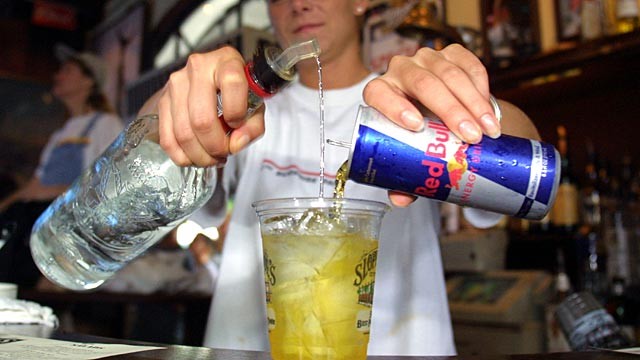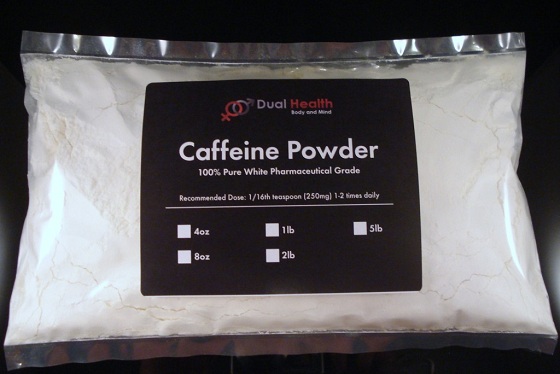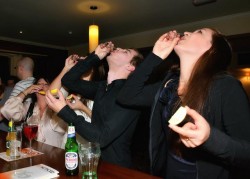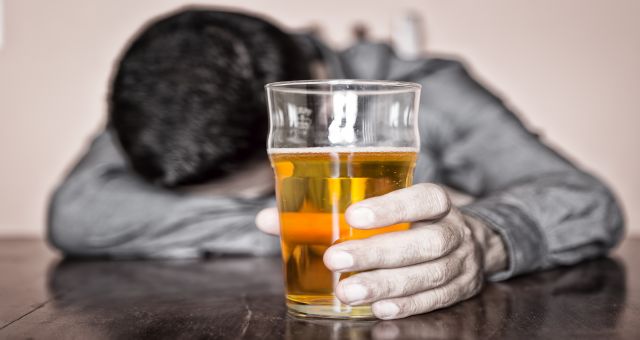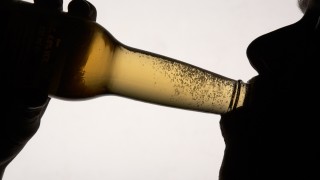
Binge drinking is becoming an increasingly deadly epidemic among America’s teenagers. While most people who are defined as binge drinkers do not depend on the alcohol they drink, such as with the disease of alcoholism, the side effects can be very dangerous. The National Institute of Alcohol Abuse and Alcoholism states that binge drinking usually occurs when men consume five or more drinks and women consume four or more drinks in the time frame of two hours or less. This will bring a person’s blood alcohol level to approximately 0.08 or higher. Let’s take a closer look at teenagers and the epidemic of binge drinking, and the detrimental affect it can have on them.
While it is true that adults consume more alcohol overall than teenagers, they tend to be more responsible with it as well. When teenagers do drink, it is usually in a party type scene, and they are consuming excessive amounts of alcohol with the primary goal of getting drunk quickly. Most commonly, teens are drinking in the house of a friend, or in their own home, and in most cases, their parents are not aware of the events taking place under their own roof. Concerts and sporting events are other occasions where teens engage in binge drinking. They either smuggle the alcohol in themselves, or proposition of-age adults to buy it for them once they enter.
Many times the teens participate in drinking games and are often times chugging beer or liquor as part of the games. Teenagers abuse alcohol more than any other drug, including cigarettes and marijuana, probably because it is the easiest to obtain. Often, teens are getting their alcohol from their parent’s supply, from producing a fake ID, or from an older friend or sibling who is more than happy to supply them with booze for a few extra bucks. Teens have been known to hang around outside of liquor and beer stores asking customers going in the establishments to purchase them alcohol for a specific amount of money. Half of all teens will have had their first drink before the age of 15, and many of them will start as young as 12, before they have even entered high school.
While many may assume that teenagers will drink whatever they can get their hands on, surprisingly, most are pretty specific about what they will drink, even sticking to a certain label or brand. While beer is the most prevalent for teenagers to go after, they also binge drink with whiskey, rum, vodka and cognac.
Teenagers engaging in this kind of activity no matter the frequency can run into a long list of problems. The Centers for Disease Control and Prevention states that teenagers who binge drink are more likely to engage in risky activities such as unprotected sex, driving while intoxicated, or getting into a car with someone who is intoxicated. They are also more likely to be sexually assaulted or sexually assault someone. Many teenagers have become pregnant while engaging in unprotected sex while drinking, and more often face legal problems than those who do not drink.
The epidemic of binge drinking is also affecting teenagers developmentally. The frontal cortex of the brain, responsible for facilitating in decision making and controlling impulsive behaviors, does not typically mature until the adult age of 25, sometimes later. Teenagers who binge drink are putting themselves at risk to delay the maturation of the frontal cortex, and it can also result in permanent brain damage. They can experience mood swings, memory lapses, and often times may develop problems concentrating. Not to mention it can lead to problems with anxiety, depression, and drug dependency in the future. Teens engaging in this activity often do not know when to stop, and many of them are getting alcohol poisoning as a result, which, again, can lead to brain damage or in worst case scenarios, death. There have been several cases of teens dying from alcohol poisoning because their friends simply thought they had “passed out.”
While the seemingly best solution to get teens to stop binge drinking is to reduce their exposure to alcohol, and alcohol advertisements that glamorize drinking, it is definitely not a simple resolution. Because alcohol is a legal drug for those 21 and over, there are advertisements, magazine articles, commercials, etc., all over that teens are surrounded by every day. The consumption of alcohol is prevalent in the movies and shows they are watching. One thing that parents can do is to lock up their liquor cabinets, as this is one of the easiest ways for teens to get their supply. Also, make sure when they are going to a friend’s house that the child’s parents do not have alcohol that would be easily accessible to the teens. While it may be nearly impossible to know every single thing your teenager is doing, make sure you know the group of friends they spend their time with. If they are hanging out with older people, or have friends who have siblings that are 21 or older, this can be another outlet for them to obtain alcohol.
Teenagers and the epidemic of binge drinking is a serious situation in America, and one that needs to be resolved. Schools, many of which have begun to do so, need to teach their students the serious damage that binge drinking can do. This type of education needs to begin at the elementary school age, as so many are beginning to drink as young as age 12.
By: Lauren DiDonato











